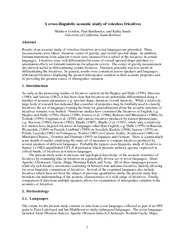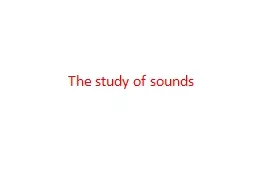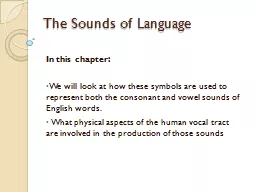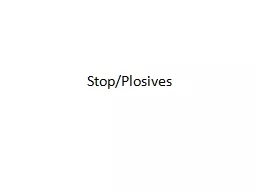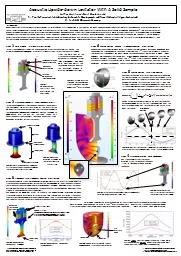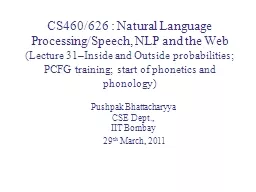PDF-1A cross-linguistic acoustic study of voiceless fricativess
Author : danika-pritchard | Published Date : 2015-07-25
2Montana Salish and Toda The examined languages form a genetically diverse set with only twoelicited in isolation from native speakers by researchers conducting
Presentation Embed Code
Download Presentation
Download Presentation The PPT/PDF document "1A cross-linguistic acoustic study of vo..." is the property of its rightful owner. Permission is granted to download and print the materials on this website for personal, non-commercial use only, and to display it on your personal computer provided you do not modify the materials and that you retain all copyright notices contained in the materials. By downloading content from our website, you accept the terms of this agreement.
1A cross-linguistic acoustic study of voiceless fricativess: Transcript
Download Rules Of Document
"1A cross-linguistic acoustic study of voiceless fricativess"The content belongs to its owner. You may download and print it for personal use, without modification, and keep all copyright notices. By downloading, you agree to these terms.
Related Documents

